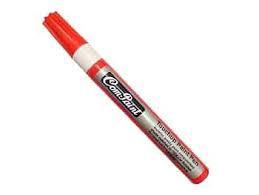When it comes to achieving a flawless finish on any surface, having the right equipment makes all the difference. Whether you’re a professional decorator or a weekend DIY enthusiast, selecting the right painting tools ensures a smoother, faster, and more efficient experience. Let’s explore the must-have items and their importance in creating a polished result.
1. Brushes for Precision
Quality brushes are the backbone of any painting project. They allow for detailed work around edges, corners, and trims. Synthetic bristles are ideal for latex-based paints, while natural bristles work best with oil-based ones. Always clean your brushes after every use to maintain their performance and longevity.
2. Rollers for Larger Areas
When covering wide surfaces like walls or ceilings, rollers are unbeatable. They come in different nap lengths—short naps for smooth walls and longer naps for textured ones. These painting tools help distribute paint evenly and reduce streaks, saving both time and effort.
3. Painter’s Tape for Clean Edges
Painter’s tape is essential for keeping lines crisp and preventing paint from bleeding onto unwanted areas. It’s especially useful when you’re working on multi-color projects or need sharp borders. Remove the tape carefully before the paint dries completely to achieve a professional finish.
4. Drop Cloths and Protective Gear
Spills and splatters are part of the process, but they don’t have to ruin your floor or furniture. Use drop cloths to cover surfaces, and wear gloves and masks to protect yourself from fumes and stains. Safety should always come first during any painting task.
5. Paint Trays and Buckets
A good paint tray helps regulate the amount of paint your roller picks up, preventing drips and uneven coating. Buckets with grids are perfect for large-scale projects where you need consistent paint coverage. These simple yet effective painting tools help keep your workspace organized and efficient.
6. Scrapers and Sandpaper
Before applying a fresh coat of paint, ensure your surface is clean and smooth. Scrapers help remove old paint or debris, while sandpaper evens out imperfections. Proper preparation enhances adhesion and ensures that your new coat looks flawless and lasts longer.
7. Extension Poles for High Reach
Reaching ceilings or tall walls doesn’t always require a ladder. Extension poles attach to rollers, making it easier to apply paint evenly at greater heights. They not only improve safety but also provide better control and consistency in your strokes.
8. Cleaning and Maintenance Tools
Once your project is complete, cleaning up is just as important as painting. Use brushes, rags, and solvents designed for your specific type of paint. Maintaining your painting tools ensures they’re ready for the next project and extends their usability over time.
Final Thoughts
The quality of your results often depends on the quality of your equipment. Investing in reliable painting tools and learning how to use them properly can transform any space with minimal effort. With the right preparation and the right tools, every stroke brings you closer to a picture-perfect finish.

